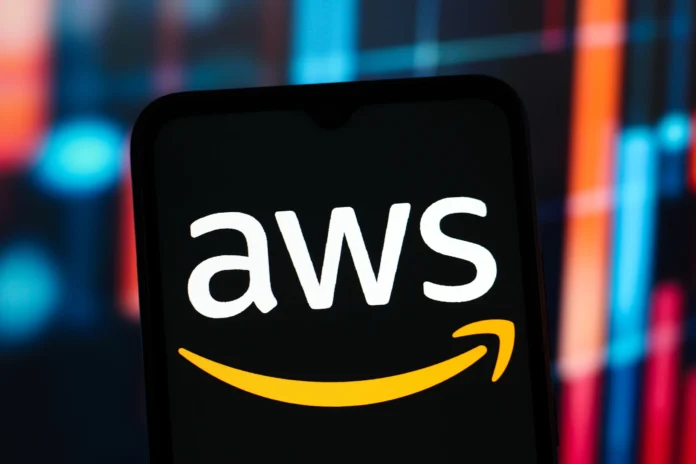
Latest Developments
- Amazon Web Services (AWS) suffered a massive outage early Monday, disrupting dozens of major apps and websites including Snapchat, WhatsApp, Netflix, and DoorDash. Amazon said the issue was not a cyberattack but has yet to identify a root cause, leaving analysts and network engineers searching for answers.
- The outage originated in AWS’s US-EAST-1 region, one of its largest and most critical hubs. For several hours, millions of users around the globe experienced elevated error rates, slow connections, or complete loss of access to online services. Amazon confirmed that services were “fully mitigated” by 6:35 a.m. ET but admitted that “some requests may be throttled” as full recovery continued.
- The lack of an official explanation has sparked speculation about whether the disruption could be linked to spectrum interference — the same type of radio-frequency anomalies recently attributed to SpaceX’s classified Starshield satellite network. While Amazon insists there’s no indication of a hack, the secrecy surrounding Starshield’s downlink frequencies raises legitimate questions about whether unintentional or covert transmissions could have interfered with Earth-based data systems.
By Samuel A. Lopez | USA Herald | October 20, 2025
WASHINGTON, DC – According to Downdetector, outage reports began flooding in around 3 a.m. ET. By dawn, the cascading impact was clear: social platforms, streaming services, delivery apps, payment processors, and news websites all went dark. Users across North America and Europe saw “server unavailable” messages and failed transactions.
AWS — which, along with Google Cloud and Microsoft Azure, underpins most of the modern internet — quickly acknowledged “increased error rates and latencies for multiple AWS services.” Within three hours, engineers claimed to have mitigated the issue, though Amazon offered no technical explanation beyond the assurance that it wasn’t a cyberattack.
USA Herald and NPR both reported on a separate but related mystery: SpaceX’s Starshield satellites emitting unauthorized downlinks within the 2025-2110 MHz range — a spectrum reserved for uplink communications to satellites. Amateur tracker Scott Tilley discovered the signals by accident.
The International Telecommunication Union (ITU) explicitly prohibits downlink use of that band. If those signals are strong enough, or if their harmonics overlap with sensitive communications systems on Earth, they could theoretically cause interference — even with terrestrial data networks dependent on satellite timing, cloud infrastructure, or GPS synchronization.
While AWS has provided no evidence of such a link, the timing is striking. Starshield’s transmissions reportedly intensified in the same period that astronomers began recalibrating telescopes for the re-emergence of interstellar object 3I/ATLAS. If these classified signals are misfiring or bleeding into adjacent frequencies, the potential for collateral disruption cannot be dismissed outright.
If spectrum interference from Starshield played even a peripheral role, the liability questions would be profound. Under the U.S. Communications Act and ITU conventions, unauthorized transmissions that disrupt terrestrial communications could trigger regulatory scrutiny or state-level accountability.
For insurers, the issue becomes even murkier. Cyber policies typically exclude electromagnetic or radio-frequency interference, while general commercial liability policies rarely contemplate orbital emissions. If SpaceX’s Starshield signals were found to contribute to a terrestrial outage, it’s unclear whether either SpaceX or the federal government (as contracting party through the National Reconnaissance Office) would bear financial responsibility.
AWS itself might face scrutiny from clients over service-level agreement breaches, but if the root cause lay outside Amazon’s infrastructure — say, in overlapping RF signals from orbit — traditional cyber insurance policies would likely not respond. This gray zone between terrestrial network risk and orbital activity represents a blind spot in current insurance frameworks.
The U.S. government has remained silent on both fronts — the AWS outage and Starshield’s signals. The National Reconnaissance Office has confirmed more than 200 satellites launched under its “proliferated architecture” initiative, many believed to be tied to the Starshield network for defense communications.
If these transmissions were intentional, they may have been conducted for national-security purposes — potentially cloaked under legal waivers or classified spectrum allocations. However, the absence of transparency complicates oversight. Even unintended “spillover” interference could have civilian consequences if not properly coordinated with regulatory authorities like the Federal Communications Commission and the National Telecommunications and Information Administration.
Whether the AWS outage was purely internal or externally influenced, it underscores the vulnerability of global systems reliant on invisible airwaves and orbiting machinery. The public deserves clarity — and regulators must ensure that classified communications do not compromise civilian resilience.


